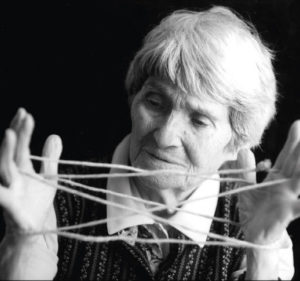A Villa Medici fino al 5 maggio 2019 è possibile visitare la prima mostra monografica di Anne e Patrick Poirier in Italia, ROMAMOR. A cura di Chiara Parisi, la mostra chiude l’ambizioso programma espositivo ideata da Muriel Mayette-Holtz – direttrice dal 2015 al 2018 – che ha visto alternarsi grandi nomi dal 2017, tra cui Annette Messager, Yoko Ono e Claire Tabouret, Elizabeth Peyton e Camille Claudel, Tatiana Trouvé e Katharina Grosse, senza dimenticare i numerosi artisti internazionali che hanno partecipato alla mostra nei giardini, Ouvert la Nuit. A questi progetti si sono affiancate le due grandi mostre dedicate ai pensionnaires, al crocevia tra ricerca e produzione, Swimming is Saving e Take Me (I’m yours).
Anne e Patrick Poirier sono tra le coppie francesi più celebri della scena artistica internazionale: una simbiosi creativa che ha preso corpo proprio a Villa Medici, cinquanta anni fa. Il trascorrere del tempo, le tracce e le cicatrici del suo passaggio, la fragilità delle costruzioni umane e la potenza delle rovine, antiche come contemporanee, sono la fonte cui attinge la loro creatività, assumendo le sembianze d’una archeologia permeata di malinconia e di gioco. Anne è nata nel 1941 a Marsiglia; Patrick nel 1942 a Nantes. Il loro lavoro è caratterizzato dall’impronta di violenza lasciata dall’epoca che hanno vissuto – loro che, sin dalla più tenera infanzia, si sono confrontati con la guerra e con i suoi paesaggi devastati. Nel 1943, Anne assiste ai bombardamenti del porto di Marsiglia, e Patrick perde suo padre durante la distruzione del centro storico di Nantes.
Vincitori del Grand Prix de Rome nel 1967, dopo aver frequentato l’École des arts décoratifs di Parigi, Anne e Patrick soggiornano a Villa Medici dal 1968 al 1972 – invitati da Balthus. Ed è proprio a Villa Medici che decidono di unire la loro visione artistica, firmando congiuntamente i lavori. Anne e Patrick Poirier appartengono a quella generazione di artisti che, viaggiando e aprendosi al mondo fin dagli anni Sessanta, sviluppa una fascinazione per le città e le civiltà antiche e, in particolare, i processi della loro scomparsa. In linea con questa sensibilità: città misteriose, ricostruzioni archeologiche immaginarie, fascino delle rovine, indagine di giardini, unione di opere storiche e produzioni in situ, sono gli elementi che danno vita alla mostra ROMAMOR a Villa Medici. La loro prima grande opera comune (1969), un plastico in terracotta di Ostia Antica, nasce dal ricordo delle varie peregrinazioni nell’antico porto romano, eletta dagli artisti terreno di scavi per eccellenza. Da allora, il proposito di ritrovare le tracce di una storia remota, li condurrà spesso a esperire l’assenza, la perdita delle architetture, dei segni e dell’eredità delle civiltà.
“Passiamo dall’ombra alla luce, alternativamente, dal nero al bianco, dall’ordine al caos, dalla rovina alla costruzione utopica, dal passato al futuro, e dalla introspezione alla proiezione. La duplice identità del nostro binomio di architetti-archeologi è ciò che consente questa erranza tra universi apparentemente lontani tra loro, dei quali cerchiamo le relazioni nascoste”, secondo le parole degli artisti. A Villa Medici, la mostra si apre con una La Palissade/Scavi in corso (2019) che conduce lo spettatore nello spazio della Cisterna offrendogli la visione di una monumentale maquette di rovine, Finis Terrae (2019) illuminate da una scritta Un monde qui se fait sauter lui-même ne permet plus qu’on lui fasse le portrait (2001). Permeato da queste prime visioni, lo spettatore entra nella prima sala con la presenza magica di una scultura luminosa, Le monde à l’envers (2019), costruita a partire di un globo terrestre e costellazioni, che confluisce in un autoritratto degli artisti sotto forma di Giano Bifronte, dio dell’inizio e della fine, rivolto al futuro sempre con un occhio al passato. Un’opera ambivalente, manifesto della mostra, da leggere come contrappunto all’arazzo Palmyre (2018), sulla devastazione del sito siriano da parte dell’Isis nel 2015. Lo spettatore prosegue trovando, al centro della sala successiva, L’incendie de la grande bibliothèque (1976), opera fondamentale degli artisti, realizzata a carbone, metafora architettonica della memoria, della mente umana e del suo funzionamento. A metà tra catastrofe e utopia, tra storia e mito, quest’opera pone lo spettatore di fronte al senso di fragilità caratteristico delle opere di Anne e Patrick Poirier. Ouranopolis (1995), ovvero la “città celeste”, occupa la sala successiva. “Dall’esterno, quasi nulla si vede”: sospesa al soffitto, la scultura consente di intravedere attraverso minuscoli fori, uno spazio interno che conta quaranta sale. Anne e Patrick parlano dell’amore che nutrono per le biblioteche, intese come metafore della memoria; un’attrazione che li conduce a creare dei musei-biblioteche ideali, in questo caso un edificio ellittico che sembra poter volare verso nuovi mondi, trasportando lontano il suo carico di immagini di fronte a una possibile catastrofe imminente. Lo spazio onirico che lo spettatore intravede dagli oblò si sviluppa, lungo la grande scalinata delle antiche scuderie di Villa Medici, catapultandolo all’interno di una “irrealtà inquietante”. Uno spazio luminoso, Le songe de Jacob (2019), composto da nomi di costellazioni, scale fosforescenti, forme serpentine sospese, piume bianche sparse sulla scalinata accompagnano il passo dello spettatore, gradino dopo gradino, sino a raggiungere lo spazio successivo, di immacolato candore, dove appare Rétrovisions(2018), autoritratto tridimensionale della coppia che si riflette in uno specchio, circondata da parole al neon che parlando di utopia, illuminano lo spazio, abbagliandoci. Poco lontano, Surprise Party (1996): un mappamondo sgonfio e sbiadito poggiato su un vecchio giradischi crepitante, a sua volta posato su una vecchia valigia – altro elemento chiave del vocabolario dei Poirier – che evoca una geografia nomade, “un mondo che gira al contrario. Una terra che stride”. Tra vertigini e vestigia, lo spettatore si trova di fronte a Dépôt de mémoire et d’oubli(1989): una croce che svetta, fatta di impronte lasciate sulla carta di maschere di dei antichi. Con l’opera Lost Archetypes (1979), lo sguardo si trova davanti alla ricostruzione in scala umana di grandi opere architettoniche: una serie di quattro plastici bianchi di siti in rovina. Tra passato, presente e futuro, caduta, costruzione ed elevazione, Anne e Patrick Poirier fanno vacillare i punti di riferimento storici del pubblico romano. Nella sala successiva, i collages: disegni vegetali fissati nella cera, Journal d’Ouranopolis (1995), un tentativo di lottare contro la privazione della memoria e dell’oblio. La sensazione di vulnerabilità, che presiede alla distruzione del nostro mondo, si ritrova nelle immagini di Fragility e Ruins (1996). La mostra si estende al giardino di Villa Medici: nel Piazzale, gli artisti disegnano con delle pietre di marmo di Carrara, la forma di un cervello umano, Le Labyrinthe du Cerveau (2019), con i suoi due emisferi. Un “manifesto autobiografico bicefalo”, che raffigura la congiunzione delle loro menti, metafora di una pratica di coppia che rievoca la tematica da loro esplorata negli ultimi cinquant’anni: i meccanismi legati al passare del tempo. Le loro costruzioni sono come grandi cervelli, paesaggio che bisogna percorrere. Amano dire, a questo proposito: “L’immagine del cervello, fatto di due emisferi, è ciò che meglio può rappresentarci; rappresentare contemporaneamente l’unità e la diversità della simbiosi che siamo”. Il visitatore continua la sua passeggiata immaginando di prendere una pausa nella monumentale sedia in granito, Siège Mesopotamia (2012-15) che troneggia nel giardino. Poco lontano, nella Fontana dell’obelisco, si intravede Regard des Statues (2019): anonimi occhi in gesso ci appaiono deformati dall’acqua in cui sono immersi. L’occhio che guarda il cielo, il tempo, l’occhio del ricordo e dell’oblio, l’occhio della storia e della violenza, conduce lo spettatore all’Atelier Balthus, dove emerge un’opera mitica, realizzata proprio a Villa Medici nel 1971: stele di carta, costruite a partire dai calchi delle Erme – le figure in marmo che costellano i viali del giardino della Villa – accompagnate da libri-erbari, “quaderni che recano annotazioni personali e disegni”, e medaglioni di porcellana su cui sono raffigurate le stesse immagini funebri. La parola che dà nome alla mostra, ROMAMOR (2019), appare in neon nel portico dell’Atelier Balthus in omaggio a questa città così importante da un punto di vista artistico e umano per i due artisti.Continue Reading..
















